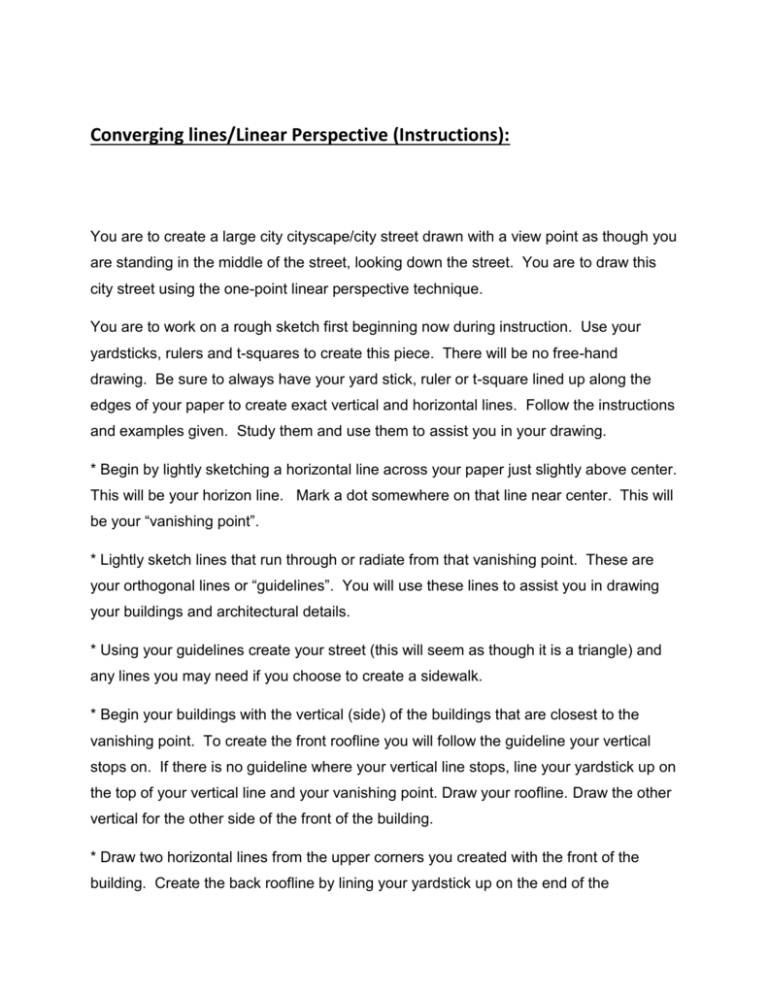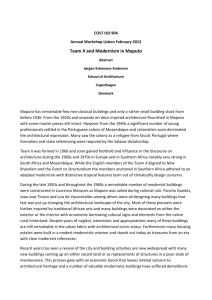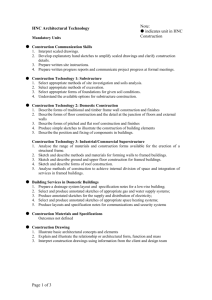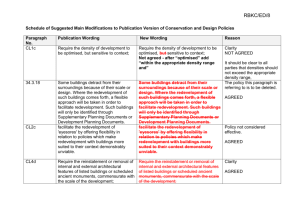Converging lines/Linear Perspective (Instructions)
advertisement

Converging lines/Linear Perspective (Instructions): You are to create a large city cityscape/city street drawn with a view point as though you are standing in the middle of the street, looking down the street. You are to draw this city street using the one-point linear perspective technique. You are to work on a rough sketch first beginning now during instruction. Use your yardsticks, rulers and t-squares to create this piece. There will be no free-hand drawing. Be sure to always have your yard stick, ruler or t-square lined up along the edges of your paper to create exact vertical and horizontal lines. Follow the instructions and examples given. Study them and use them to assist you in your drawing. * Begin by lightly sketching a horizontal line across your paper just slightly above center. This will be your horizon line. Mark a dot somewhere on that line near center. This will be your “vanishing point”. * Lightly sketch lines that run through or radiate from that vanishing point. These are your orthogonal lines or “guidelines”. You will use these lines to assist you in drawing your buildings and architectural details. * Using your guidelines create your street (this will seem as though it is a triangle) and any lines you may need if you choose to create a sidewalk. * Begin your buildings with the vertical (side) of the buildings that are closest to the vanishing point. To create the front roofline you will follow the guideline your vertical stops on. If there is no guideline where your vertical line stops, line your yardstick up on the top of your vertical line and your vanishing point. Draw your roofline. Draw the other vertical for the other side of the front of the building. * Draw two horizontal lines from the upper corners you created with the front of the building. Create the back roofline by lining your yardstick up on the end of the horizontal you just drew and your vanishing point. Complete your building with the last vertical line for the back of the building. Complete the rest of your buildings in the same way. * Building rooflines below your horizon line should slant downward and you will see the rooftop. Building rooflines above your horizon line should slant upward and you will not see the rooftop. * Use your guidelines in the same way to create windows and doors and other architectural details. Instructional diagrams and examples: Your final piece will be much more detailed than your rough sketch and will be done in color (color pencil). Use the blending and layering techniques practiced earlier. Your final artwork must include: * Many buildings along each side of your street (include buildings behind your forward buildings as seen on streets behind your street). * Architectural details (ie. windows, doors, awnings, balconies, brick, stone, block…) * City street details (ie. street signs, street lights, traffic lights, benches, planter boxes…) * Free-form shapes and forms (ie. shadows, puddles, clouds…) *Organic shapes and forms (ie. people, animals, trees, flowers… things that are alive) Do not include any signs or writing on your buildings. (Do not “name” your buildings.) Do not depict (show or draw) any crime scenes in any way.











